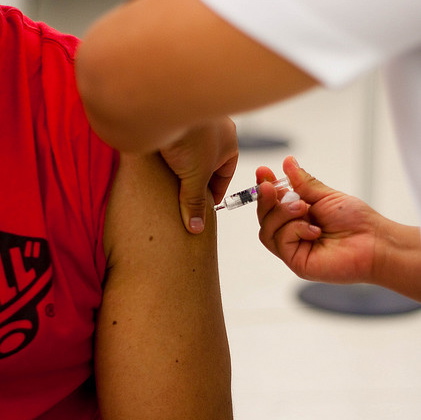
Despite a mandatory vaccination law that followed a pertussis outbreak last year, some California students are returning to class this fall without their TDAP booster shots.
The immunization law, passed last September, required that junior high and high school students show proof of a TDAP booster, the vaccination that prevents pertussis, also known as whooping cough, by the first day of school. Another bill passed this summer gave students an additional 30 days to get vaccinated.
Why the delay?
California Immunization Coalition director Catherine Flores Martin said that as of May, CIC had heard from about 20 percent of the state’s schools that their students would likely miss the immunization deadline.
This is the first time that the state has had to get a population of this magnitude in compliance with a new law, said Linda Davis-Alldritt, California Department of Education School Nurse Consultant. The whooping cough vaccine is the first immunization law that affected high school students, she said.
“Word has gotten out, but mobilizing the state as a whole is like moving a battleship. It takes a lot of effort to move such a big object in one direction,” Davis-Alldritt said.
The Santa Ana school district is at about 80 percent, said Angela Burrell, spokeswoman for the Santa Ana Unified School District. The district expects they will get the last fifth of its student population vaccinated within the new 30-day extension, given the resources available at nearby pharmacies and the county.
As far as how other school districts are faring, Davis-Alldritt says that there was no provision in the original law that authorized the CDE to collect information about specific schools and districts.
The department has gotten calls from several districts, however, reporting they currently only have between 20 to 40 percent of students vaccinated at this point, she said.
Community clinics are getting the word out as part of their everyday interactions with patients, Flores Martin said, adding that budget cuts reduced promotional resources and one-on-one education. The availability of free vaccination clinics was also another solution that was partially eliminated as a result of the cuts, she said.
“It used to be that if you couldn’t afford it, you could go to the health department and it will be free. Not anymore.” Flores Martin said.
The threat that pertussis poses to schoolchildren should have everyone concerned. “We have had an outbreak that other states simply haven’t seen,” Davis-Alldritt says.
California still faces a high risk of a pertussis outbreak, she added. Last year saw the highest number of whooping cough incidences in 60 years. Even though the law mandates vaccination for school children grades 7-12, the disease can strike all age groups, from small children to the senior citizen population.
Dr. Michele Amirkhan, Santa Ana family practitioner and mother of a high school freshman, said that she’s uncomfortable at the thought of unvaccinated students commingled with vaccinated students, even if only for 30 days.
If students don’t have the vaccination, they should not be with the general population who does, Amirkhan said.
“Even if you’re immunized, you could carry it home to young children the elderly and wreak havoc,” she said. “This is dangerous on a community level and could get ugly.”





